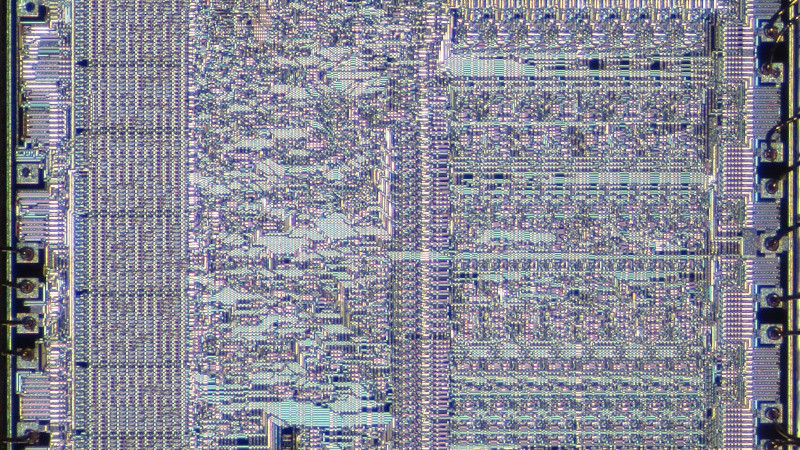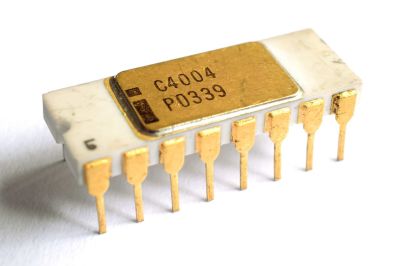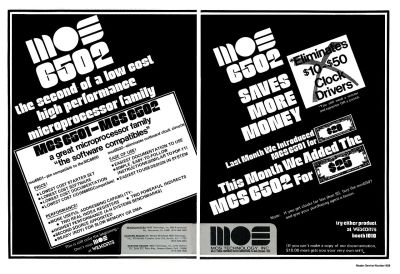
When it was recently announced that the Linux kernel might drop support for the Intel 486 line of chips, we took a look at the state of the 486 world. You can’t buy them from Intel anymore, but you can buy clones, which are apparently still used in embedded devices. But that made us think: if you can’t buy a genuine 486, what other old CPUs are still in production, and which is the oldest?
Defining A Few Rules

There are a few obvious contenders that immediately come to mind, for example both the 6502 from 1975 and the Z80 from 1976 are still readily available. Some other old silicon survives in the form of cores incorporated into other chips, for example the venerable Intel 8051 microcontroller may have shuffled off this mortal coil as a 40-pin DIP years ago, but is happily housekeeping the activities of many far more modern devices today. Still further there’s the fascinating world of specialist obsolete parts manufacturing in which a production run of unobtainable silicon can be created specially for an extremely well-heeled customer. Should Uncle Sam ever need a crate of the Intel 8080 from 1974 for example, Rochester Electronics can oblige.
Thus when we’re looking for the oldest CPUs, it’s those available from regular production that we’re talking about, not old stock, not special manufacture, and not a core included in a modern part. What’s the oldest CPU in production today that an engineer from back in the day would recognise? To answer this question it’s necessary to delve back into the timeline of early microprocessors, and comb the world’s electronic suppliers in search of obscure chips.
Working Through The Years

The first microporcessors appeared on the market in 1972, with Intel’s 4004 being generally accepted as the first of the breed. None of the early Intel chips are in regular production today, mostly we suspect because of the success of the aforementioned Z80. Its backward compatibility with 8080 instructions as well as its lower support chip count than the Intel part made it a huge seller, and the obvious choice for continuing development in that line. From the rest of the players in those first couple of years as far as we can see no others survive. This shouldn’t be too much of a surprise, as the microprocessor was a new, expensive, and fast-moving technology in which no one chip gained enough market share to attain longevity.
So with nothing from ’72 and ’73 remaining in production, it’s in 1974 that things become interesting. The TMS1000 mask-programmed microcontroller has long since faded away, but the Motorola 6800 series still appears in suppliers listings in the form of the Hitachi HD46800 and its derivatives manufactured by Renesas. A closer look shows these processors as being supplied through Rochester Electronics though, so sadly we’ve not found our earliest still-in-production chip. The NXP HC05 and HC08 microcontrollers may be the 6800’s distant descendant, but don’t count here because they’re not the same part.
Like a tired glam rock band unable to see punk on the horizon, we stumble into 1975. Here there’s a clear contender in the form of the aforementioned 6502. It was famously first sold at the Wescon electronics trade show in September of that year, and continues to be available in CMOS form as the WDC 65C02. Before crowning it though, there’s another contender. The RCA 1802 is variously listed as launching in either 1975 or 1976, and is listed on some suppliers websites as the Harris CDP1802. However as far as we can ascertain it was first on sale in early 1976, and yet again it’s revealed as coming via Rochester Electronics.
The Winner, And A Few Others

We have a winner then, in the 6502. Its popularity in home computers and more mundane appearances in a myriad control systems have kept it in production for nearly five decades, and its influence has permeated far and wide.
But before we leave this subject, it’s worth taking a look at some other famous microprocessor families to see whether any of their forebears remain from later in the ’70s.
It’s fair to say that the families we’ve already covered span most of the popular 8-bit lines from the mid-1970s, and by the end of the decade the attention at the cutting edge had moved to 16-bit designs. Of these, 1979’s Motorola 68000 ceased production in the mid 1990s, and the closest remaining family parts are NXP’s Coldfire range. For its 8086 rival we’ve talked about the much later 486 above, but surprisingly there’s a semiconductor company that still lists the an equivalent to the 16-bit Intel part in its product line. The Kvazar plant in Kiev, Ukraine (Google Translate link) has the KR1810VM86 Soviet 8086 clone, though sadly due to the war in that country we’re guessing they might have more important things on their plate at the moment.
Finally, it may be a surprise to some users of PIC microcontrollers to find that this family has its roots in a peripheral chip for a long forgotten General Instruments 16-bit system. The PIC1650 from 1976 was simply a Peripheral Interface Controller that contained a programmable core. This gave it a usefulness far beyond its original application, and while the original chip has long gone out of production there are still PIC chips in production that share the original PIC architecture.
When we were discussing this topic among Hackaday staffers we didn’t expect the 6502 to be the winner, as we were sure that a few others would have made it. But since our ruleset applied to volume-produced devices and the original chips rather than merely architectures, it’s hardly surprising that something so hugely popular would remain in production. Let’s hope it’s still on sale as it passes into its sixth decade!
header image: Pauli Rautakorpi, CC BY 3.0.
0 Commentaires